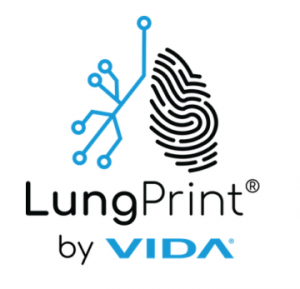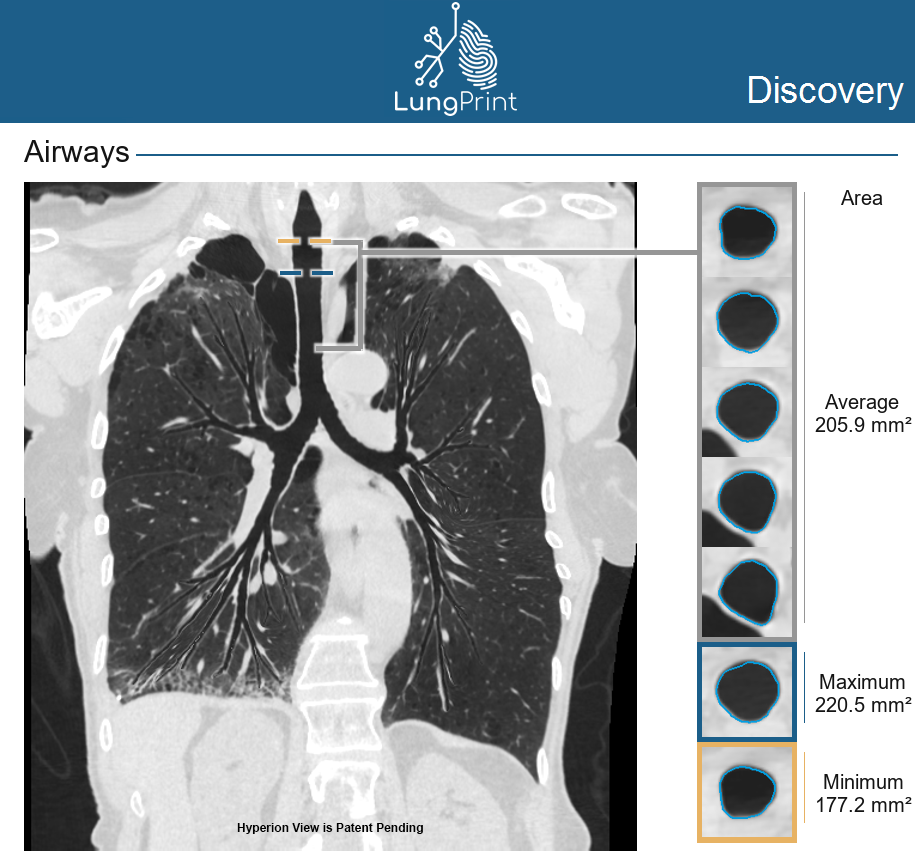Read how VIDA’s LungPrint Discovery AI-driven application, coming to the Nuance AI Marketplace for Diagnostic Imaging and integrated with Nuance’s next-generation reporting platform, PowerScribe One, can significantly impact the time it takes to interpret a study with a greater understanding of the underlying patient condition.
Lung disease is among the highest causes of morbidity and mortality in the world, yet traditional imaging techniques don’t easily account for the complexity of the airway structure to make a fast, accurate diagnosis. Due to these complexities and the increasing resolution of scanners, radiologists are challenged to review complicated reconstructions of airway trees via conventional modalities.
Susan Wood, CEO of VIDA, shares her thoughts about how VIDA’s LungPrint solution and its patent-pending and AI-driven Hyperion View airway visualization is aimed to provide greater workflow efficiencies and targeted evaluation across a range of lung conditions, including cancer, emphysema, airway obstructive diseases, asthma and interstitial lung disease.
Like a fingerprint, each lung is unique. This poses challenges in measuring lung function. LungPrint is an innovative AI-powered lung analysis solution that delivers quantitative CT information with novel airway visualizations. It promises to empower radiologists with fully automatic lung quantification and significant boosts in reading efficiency.
VIDA’s mission is to transform pulmonary care with AI and predictive analytics to increase the efficiency, quality, and precision in reporting lung CT abnormalities. LungPrint takes complex workflows and analyses and puts them into a context and conciseness to help radiologists’ efficiency — shaving minutes off each read.

Q&A
Jonathon Dreyer: Tell us about your business – when and how you started and your development journey.
Susan Wood: VIDA is the leading lung imaging analytics company, transforming care for pulmonary patients by empowering care teams with superior information. VIDA has been focused on bettering outcomes and the patient journey for pulmonary patients since our beginning, over ten years ago. We’ve developed and validated more than 30 quantitative imaging biomarkers that have been utilized in both clinical trials and clinical practice. These biomarkers have the potential to increase the precision and personalization of lung care. We also target a third “P” – prediction — as we develop models with the ability to assess progression and outcome probabilities.
JD: What AI algorithms do you have and what do they do?
SW: We offer LungPrint, starting with a product we call “LungPrint Discovery.” It provides fully automatic quantification of lung physiology and functional tissue, including both high- and low-density analysis by lobe to flag emphysema-like and interstitial abnormalities. It features a novel patent-pending airway visualization called “Hyperion View” with the potential to significantly accelerate interpreting complex airway anatomy. What’s particularly exciting is that “LungPrint” is unique in every individual – like a fingerprint. Through imaging analytics, we can uncover a unique lung profile and help providers identify personalized care plans for their patients.
JD: What’s the big “Aha” moment when you first show users what your AI algorithm(s) can do for them?
SW: We previewed LungPrint Discovery at RSNA 2018. When we showed it to a renowned chest radiologist, the response was humbling: “This is a dream. I’ve been through all these massive booths at the show and haven’t seen anything quite so unique as your Hyperion View. Here you are with a small booth, yet, you have the most impressive technology. How do I get it?” When we heard that response and others like it, we knew we had something special.
JD: What challenges or needs did you see that drove you to focus on this?
SW: LungPrint helps radiologists with three key challenges:
- Through automation, LungPrint hopes to minimize the mundane aspects of reading a chest CT.
- Chest CTs are tedious to read because there are so many anatomical structures to inspect. Airways pose a unique challenge because their complexities make them difficult to visualize in any one plane. LungPrint includes a novel, patent-pending airway visualization tool to address this challenge. Early feedback on the feature indicates a potential for significant time savings in image review and a more complete understanding of any underlying condition.
- By helping radiologists provide a more precise, quantitative report to clinicians, radiologists have the potential to elevate their value among the care team.
JD: What’s the number one benefit you offer?
SW: Increasing the efficiency of each chest CT read while empowering radiology with auto-quantification and richer reports for referring clinicians.
JD: Are there any stories you can share about how your algorithm(s) drove measurable patient care outcomes?
SW: One that comes to mind is the story of a 59-year-old farmer who was misdiagnosed with asthma. Using traditional methodologies, his emphysema was missed visually; however, with the help of VIDA’s precision analysis, a lower-lobe predominant high density was flagged. This led to additional testing and a differential diagnosis of alpha-1 emphysema. LungPrint helped to indicate the visually missed emphysema and lead to the differential diagnosis and correct treatment path for this patient.
JD: What benefits do Nuance and its AI Marketplace for Diagnostic Imaging bring to your users? What problems does the marketplace and integration into Nuance’s workflow solve?
SW: The Nuance team has been fabulous to work with across the board. In the course of our joint interactions, starting at the executive leadership level, to the product development teams, to the commercial implementation teams, we are seeing the very strategic fit between Nuance and VIDA take concrete form. Specifically, the seamless integration of VIDA’s LungPrint directly into the Nuance platform provides the workflow efficiencies required for clinical acceptance of this AI solution. The depth and breadth of the Nuance team, as well as the collaborative approach, has been an exceptional experience for VIDA. We are excited to be working with Nuance on our shared vision of bringing the power of AI to the radiologist in routine clinical practice.
JD: What is your vision for how your solution(s) will evolve over the next 5 years?
SW: We see so much potential for LungPrint through the Nuance platform. Step one, as we’ve described, is all about clinical efficiency. Features like Hyperion View (airway analysis) and auto-quantification by lobe will have a material effect on both chest CT report value and interpretation efficiency.
Looking beyond efficiency gains, we see exciting opportunities to make a deep clinical impact throughout the care path. For example:
- Detection – AI will help flag areas of interest. Beyond nodules, there are several anomalies in the thorax with which we can assist in identifying.
- Diagnosis – Many lung diseases are diagnosed late or inaccurately because of limited evaluation methods. There is greater potential in the future for AI to provide significant value beyond detection and into disease stratification and identification of risk. We hope to help care teams identify a correct diagnosis early, leading to disease management strategies that can be employed while quality of life is high and care costs are low.
- Disease Monitoring –Tracking of disease progression with more objective and precise information can empower physicians to make highly informed care decisions on objective, actionable data. This area is where AI can uncover hidden insights, flagging at-risk patients and predicting adverse events before they happen.
- Treatment Selection – AI will increasingly serve a decision support role in the selection of treatments or combinations of treatments. We foresee a day where a set of potential treatment options are input into an AI model and the model outputs outcome and risk predictions to aid the physician.
In summary, we see the application of AI expanding along two axes: (1) along the care path to address needs from detection through treatment and (2) along a path of increasing maturity to the point of being truly predictive. We intend to build our product portfolio over the next 5 years to tackle many challenges in these areas.
JD: In one sentence, tell us what you think the future of medicine will look like.
SW: Healthcare will be increasingly precise, personalized, and predictive, driven in large part by the evidence and in AI-powered assistance throughout the care path.
Learn more
Learn more about VIDA.







